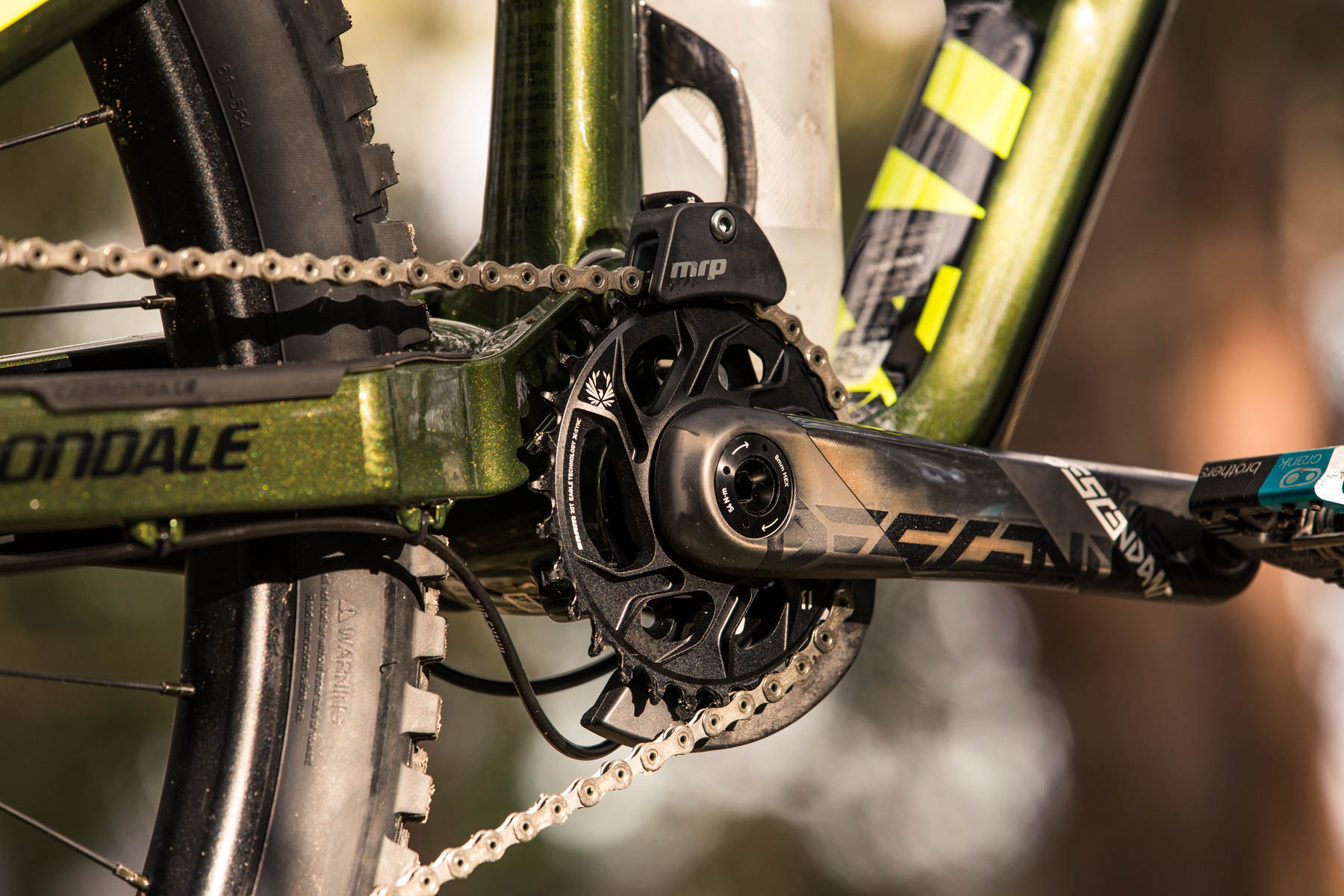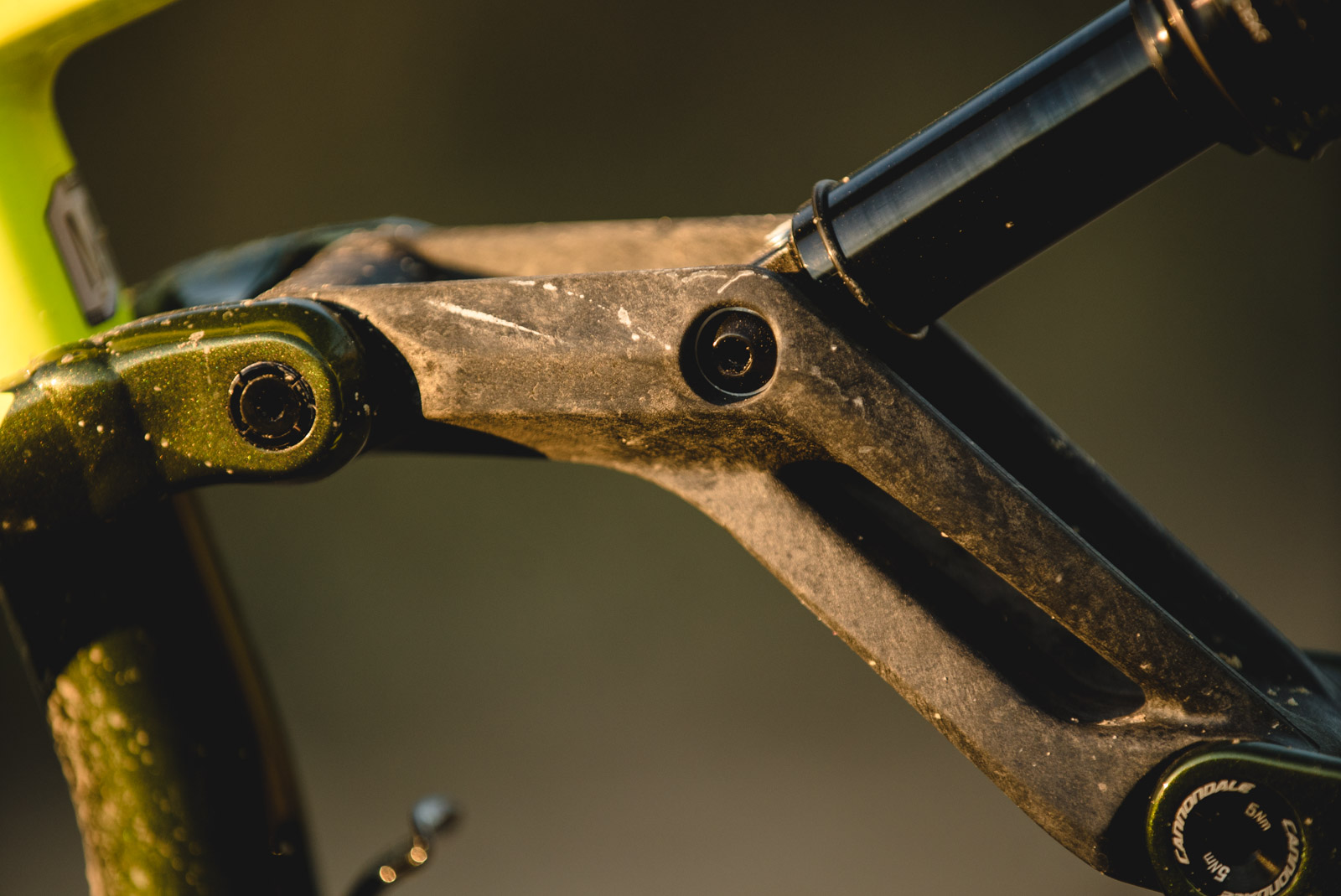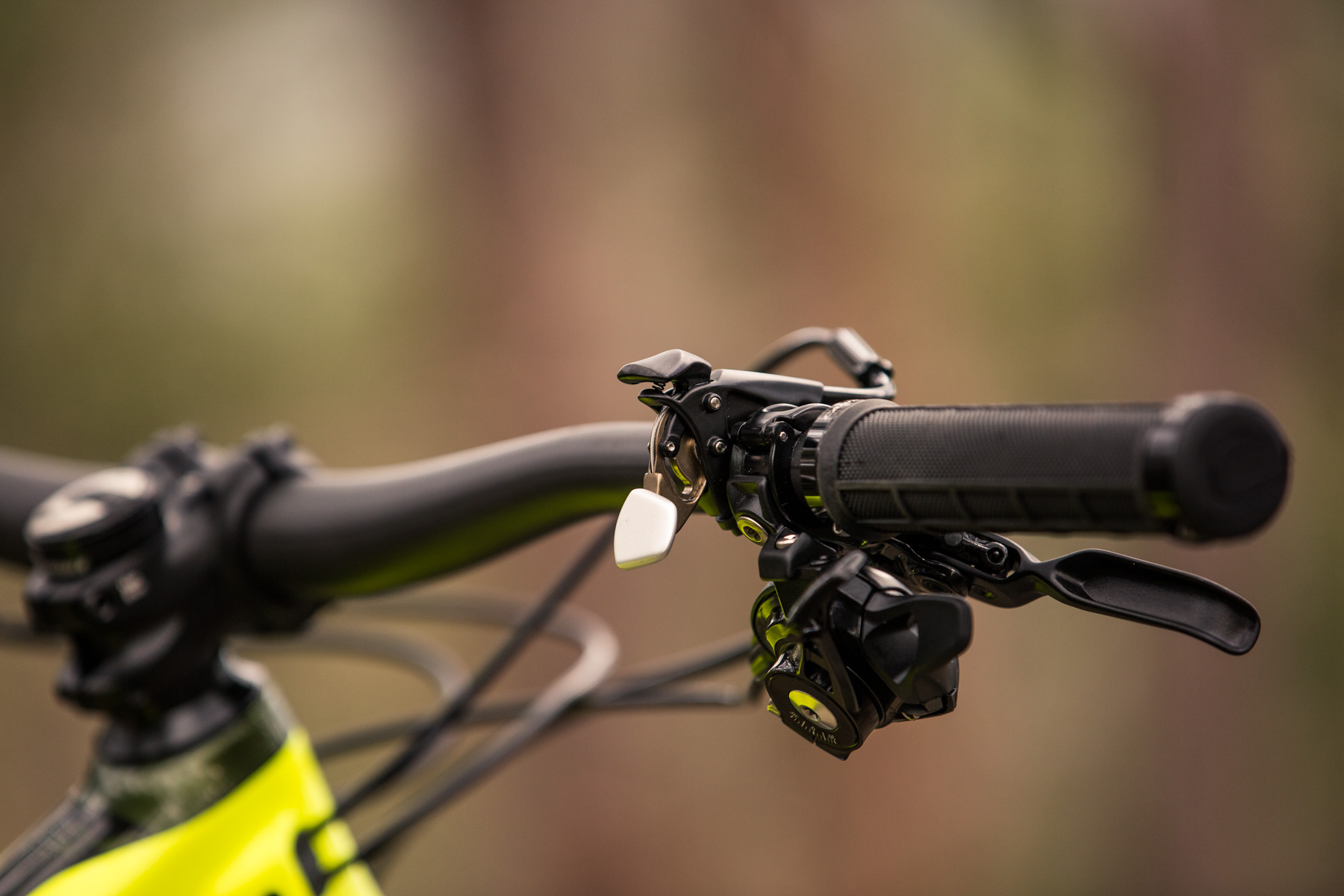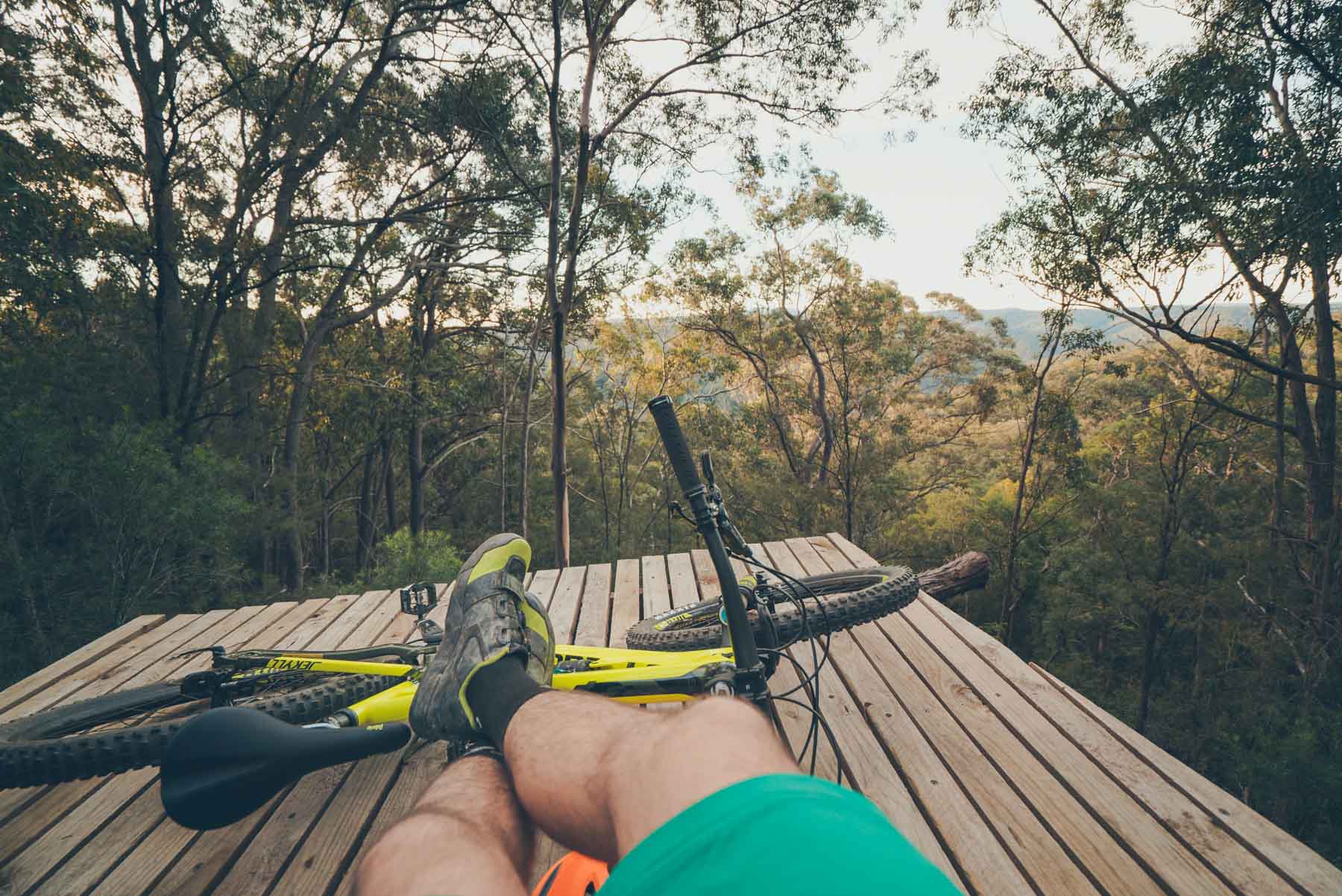Watch our full video review below:

So what’s new?
Everything. Cannondale went right back to the fundamentals with this one, leaving a lot of previous development behind. We think it was the right call. Cannondale’s mountain bikes have been crying out for an injection of practicality and rider-first design, and with Jeremiah Boobar (the man behind the RockShox Pike) at the helm of suspension design now, they’re getting it. The only carry over from earlier Jekylls is the fact you can adjust the travel on the fly.


Not a trail bike, no sir.
The previous Jekyll awkwardly tried to straddle the divide between trail bike and enduro bike, but Cannondale have been clear this time around. This bike is here to win Enduro races and hammer descents. 165/170mm travel, slack as, big rubber.
Yes, it has adjustable travel down to 135mm, but that doesn’t mean it’s trying to disguise itself as a trail bike – the travel adjust is there to add a little zest on the climb to the top of the next descent.


Where does this model sit?
Our Jekyll 2 is the second top model in the range, at $7999. You can spend a little more to get Eagle XX1 and Factory level FOX suspension, plus carbon wheels, but we don’t think many people will be looking to upgrade beyond this level.

How’s the build?
The aesthetics of this bike were a little jarring to us at first – we’ve all become so accustomed to seeing the rear shock tucked down low on most new bikes, that it seemed quite strange to have such a high and forward shock position. The advantage of course, is that you can still run a water bottle, which is a big plus on an enduro race bike, where lots of riders are looking to ride without a pack if possible. Anyhow, we’re used to the frame layout now, and we’ve been impressed by the attention this bike gets – the general consensus is that it looks “hot”.
The finish and construction are beautiful. The paint job is so crisp, and in the sunlight, the darker olive patches come alive with glimmering metallics.

Is that link carbon?
Sure is! The link is massive, so making it from carbon was probably pretty important to keep it all light, but it also adds stiffness to the frame. Looking at the distance from the rear axle to where the linkage joins the frame, it’s a pretty long unsupported span. If the link wasn’t super stiff, this frame would definitely be at risk of being quite flexy. As it stands, it’s not the stiffest bike we’ve ridden, but the whopping chain stays and linkage keep it all in line. Less obvious is the use of expanding collet style hardware on all pivots, which has been rock solid over the course of our testing.

Tell us about that shock!
The Gemini shock is a partnership between FOX and Cannondale, with on-the-fly adjustable air volume/travel. Using a handlebar mounted lever, you can switch between two modes, that Cannondale have called Flow and Hustle. Flow gives you the full 165mm of travel. Flick it into Hustle mode, and the air volume of the shock is reduced, giving you 135mm of travel and a much firmer spring rate. This means less sag, a higher bottom bracket height, and more lively pedalling performance.
It’s not a remote lockout – the compression damping doesn’t change at all when toggle between modes. It’s simply an air volume and travel adjustment. It’s simple to use and cleanly executed.


TEST LOCATION: TRAILSHARE CABINS
As part of our review of the Cannondale Jekyll 2, we spent a weekend up at the new Trailshare Cabins, Kulnura, just over an hour out of Sydney. This place is remarkable: over 20km of private trails, in beautiful blackbutt and turpentine forest, rider-friendly sustainable accommodation. It really is a little piece of paradise, and we’re certain we’ll be using it as a base for a lot more bike testing in the future.


There’s accommodation for up to six people, with a communal kitchen, relaxed outdoor dining with a fire pit and as you can see below, the trails literally start from the edge of the verandah. Peace and quiet, trails all to yourself, it’s the ideal place for a chilled out weekend away. Take a look for yourself right here, or book via Air BnB.

Practicality first.
Cannondale have done their darnedest to overcome the perceptions on impracticality from the previous Jekyll. The new shock is easy to service (unlike the notoriously expensive and fiddly DYAD pull shock of years past), and the frame will happily accept any standard off-the-shelf shock, should you wish to change shocks or if you need to get yours serviced.

The spec is super practical too, all carefully selected to give enduro racers peace of mind; beefy down tube protection, a chain guide with bash guard, alloy rims rather than carbon, and a whopping gear range, thanks to the Eagle 12-speed drivetrain.
Geometry standouts?
It’s all very descent focused here; 65-degree head angle, a very low bottom bracket for good stability, a steep seat angle for climbing. But it’s the rear-centre measurement that stands out. Through cleverly offsetting the rear end (they call it Ai – Asymmetric Integration) and then using a custom dished rear wheel, Cannondale have kept the chain stay length to just 420mm. That’s very, very short for a bike of this travel, and it has a big impact on the lively way this bike rides.


Setup?
Getting the most out of the Jekyll took a couple of rides. Initially we ran the bike with 30-35% rear sag, which is not uncommon for a bike like this, with our thinking being we’d use the Hustle mode to keep it up in the travel on the climbs. But we found ourselves blowing through the travel too often, and feeling like we were stuck down in the suspension. Upping the pressures until we had 25% sag was the key. With things a little firmer, we had heaps more support, and the bike’s agile and urgent character came to the fore.

What’s the ride like?
This is one of those bikes that suits a rider who likes to work the terrain for speed. As we’ve noted above, the rear end is short and the bike reacts best to a slightly firmer setup, which makes this bike a very lively ride. It likes to get on its rear wheel and manual out of trouble, or jump over ruts looking for a faster line. It wants to pump down the backside of every compression or lander, giving you good feedback about what those big 2.5″ Maxxis tyres are doing beneath you.
The proportions feel great as well, we like the length of the bike; it might be long and slack up front, but the short rear end means you’re never feeling like you’re at the mercy of a massive wheelbase when you need to change direction quickly.
The pedalling performance isn’t mind blowing (unless you switch into Hustle mode), but we found ourselves working the terrain to go faster, rather than hammering at the pedals. In short, it’s much more engaging to ride than a lot of long-travel bikes.
The Jekyll is a very silent machine – no cable noise, a chain guide and dense chain slap protection keeping the chain quiet. It’s a nice feeling, just hearing those big tyres on the rocks, and not being distracted by noises that make you think everything’s shaking apart around you.
What about the climbs?
Switching into Hustle mode makes all the difference here. We only used the shock’s compression lever perhaps once in the whole test. Instead, we just left the shock’s open-mode compression setting in number 2 (the little black dial), and engaged the Hustle mode when it was time to climb. Because Hustle mode doesn’t add any extra compression damping, the shock is still able to deliver excellent traction on slippery surfaces, which is usually compromised with a lockout.

It’s still definitely an enduro bike though, not a trail bike, and it prefers long fireroad grinds to technical singletrack climbing. Nothing will change the fact you’ve got 65-degree head angle to contend with on the climbs, so don’t expect any miracles when you’re climbing, Hustle mode or not.
Would you recommend it?
For enduro racing, or descent focused riders, 100%. If you’re more of a trail rider, then take a look at the Trigger which shares all the same construction and suspension features, but with a little less travel and more climb friendly geometry.
The new Jekyll is a big victory for Cannondale – a triumph of practicality and playfulness that they definitely needed. We like that Cannondale have been able to retain the key elements of the previous Jekyll that shone (the travel adjustment) and rework the rest into a glamorous, modern enduro bike. Welcome back, dudes!




